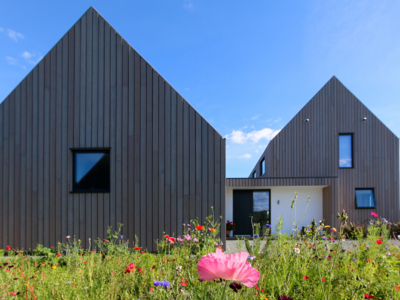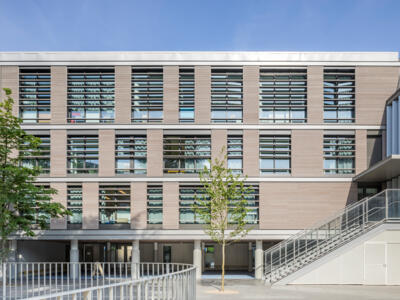Wood is a natural, living material. When exposed to the elements and the passage of time, unfinished natural wood cladding will naturally turn grey. If you like this natural look, you can choose unfinished wood cladding. At Sivalbp, our Authentic range offers a wide selection of unfinished wood cladding.
If, on the other hand, you want to anticipate the natural greying of the wood and provide it with optimal protection against the weather and UV rays, you should choose wood cladding with a finish.
Finishes for wood cladding can be divided into two main categories:
Finishes for wood cladding: film-forming finishing products
These finishes for film-forming wood cladding (i.e. ‘forming a film’) are wood stain or paint finishes. Opaque or semi-opaque, these finishes deposit a film on the surface that covers the natural ‘feel’ of the wood. To preserve the original appearance of the finish, wood stains and paints are finishes that require regular maintenance to maintain the appearance of your façade. Discover our COLORS range: a range of paint finishes for wood cladding.
Finishes for wood cladding: non-film-forming finishing products
These are saturating or oil-based finishes for wood cladding, which penetrate deep into the wood without leaving a film on the surface, preserving the wood's appearance. UV- and weather-resistant, these finishes provide long-lasting, attractive protection for wood cladding. These finishes are easy to maintain. At Sivalbp, we specialise in wood cladding with saturators. Are you looking for wood cladding in natural colours? Or perhaps contemporary greys? Or even a burnt wood look? Discover our saturators in our Elégance, New Age and Vintage ranges.










